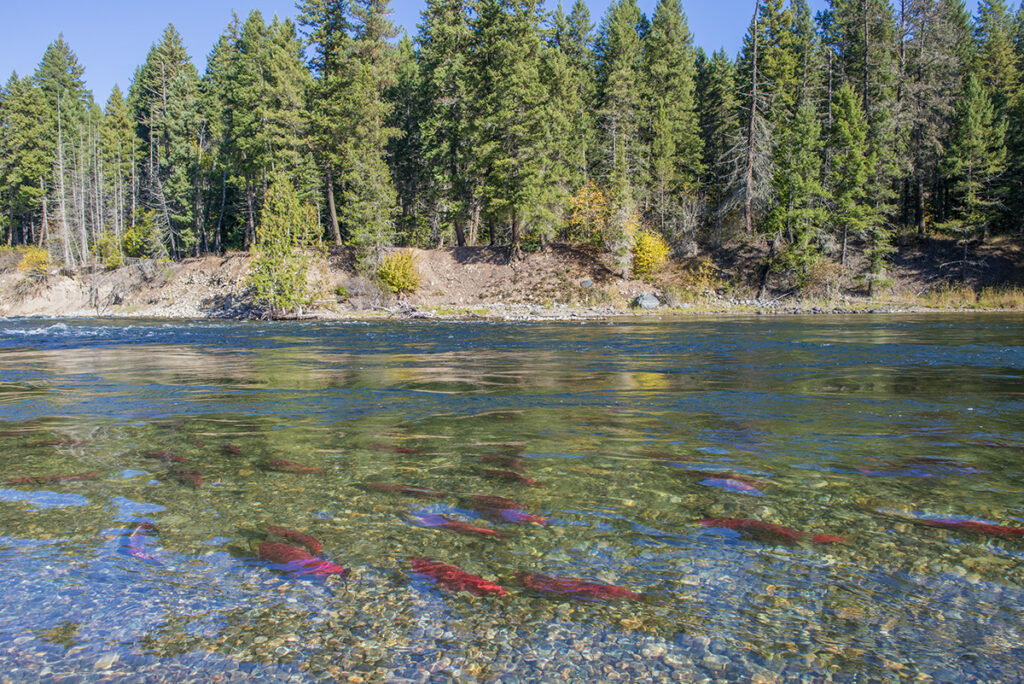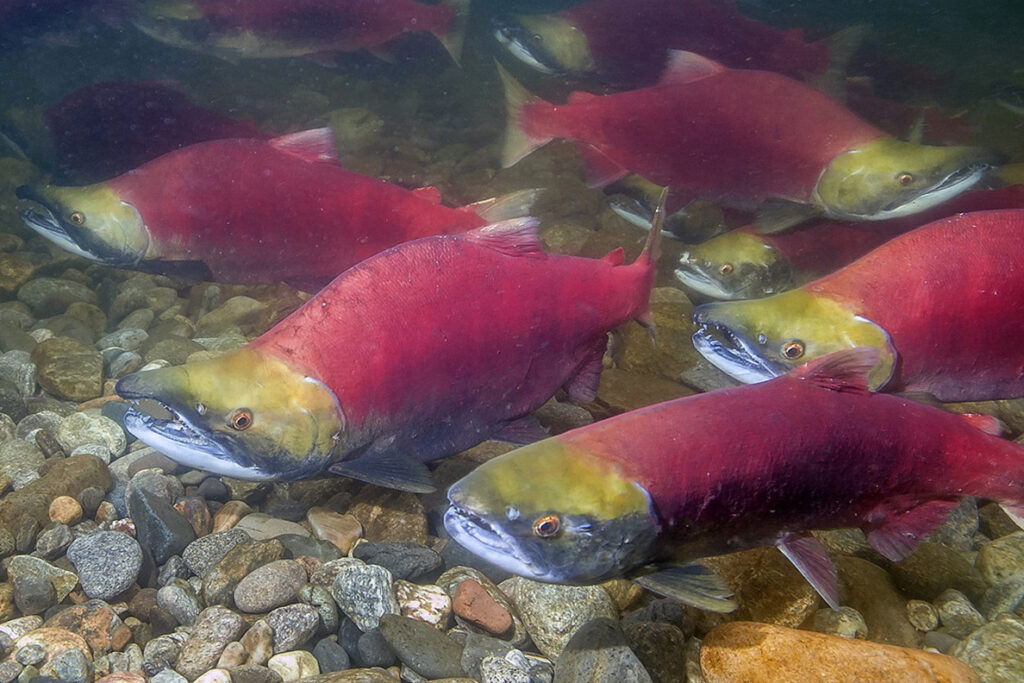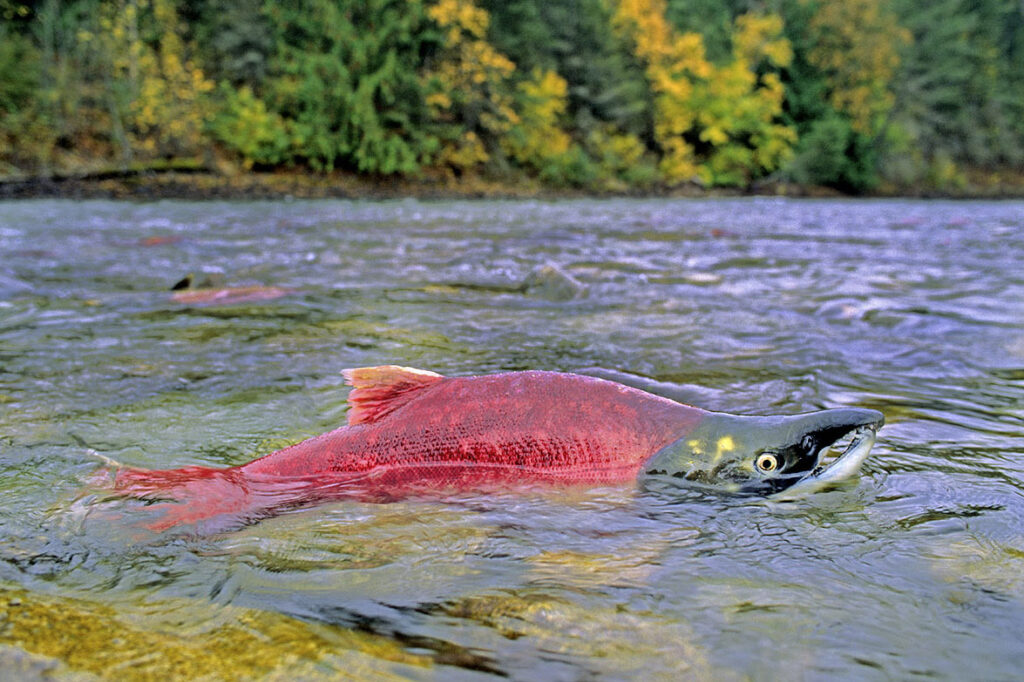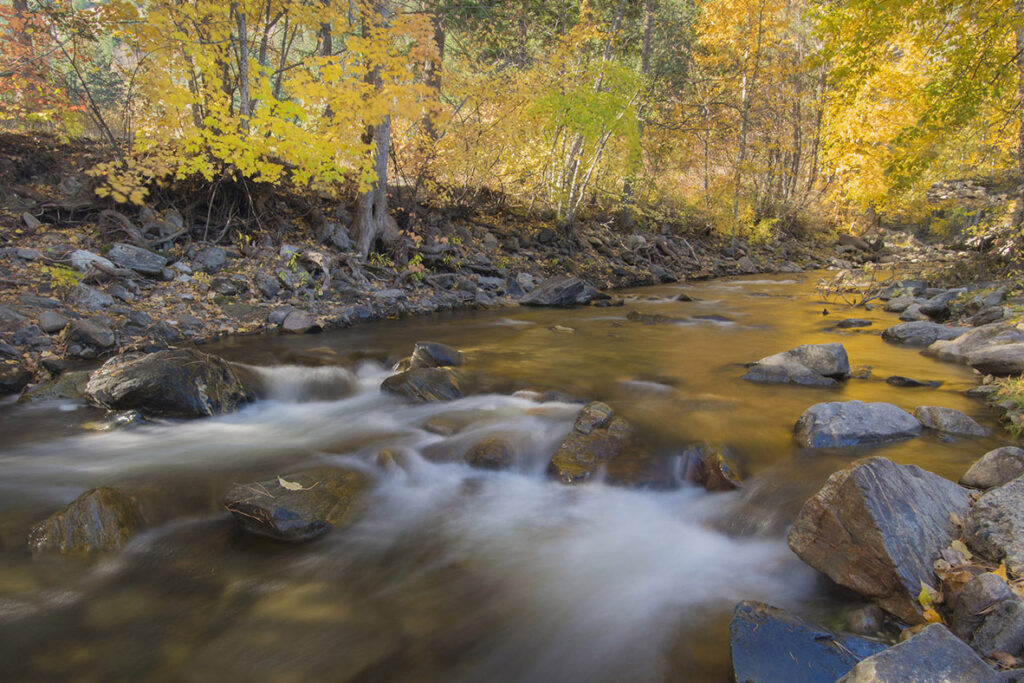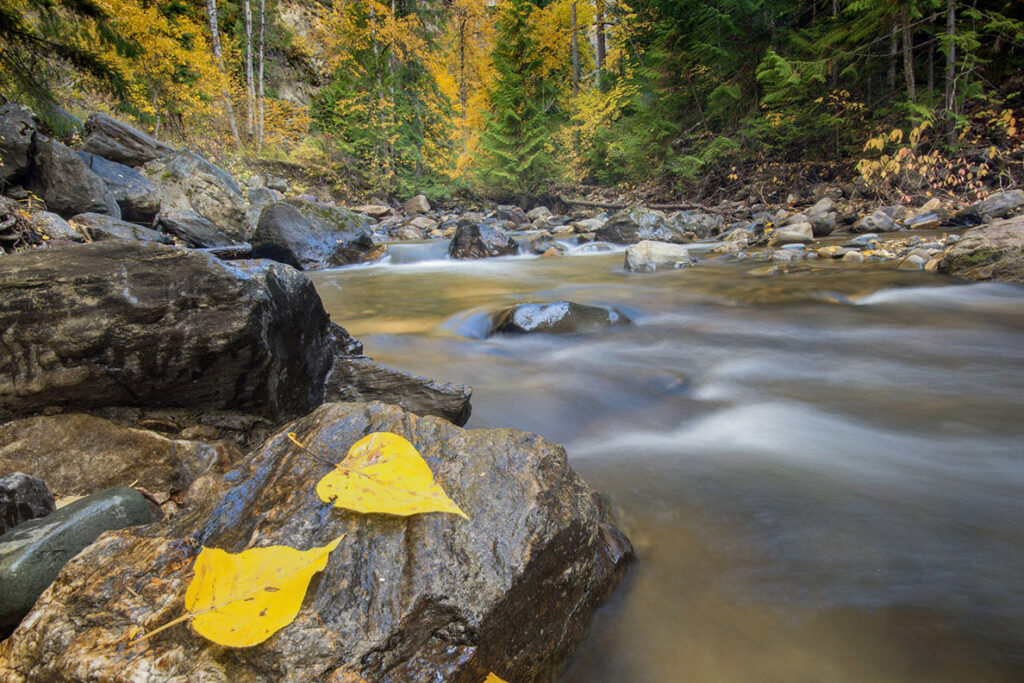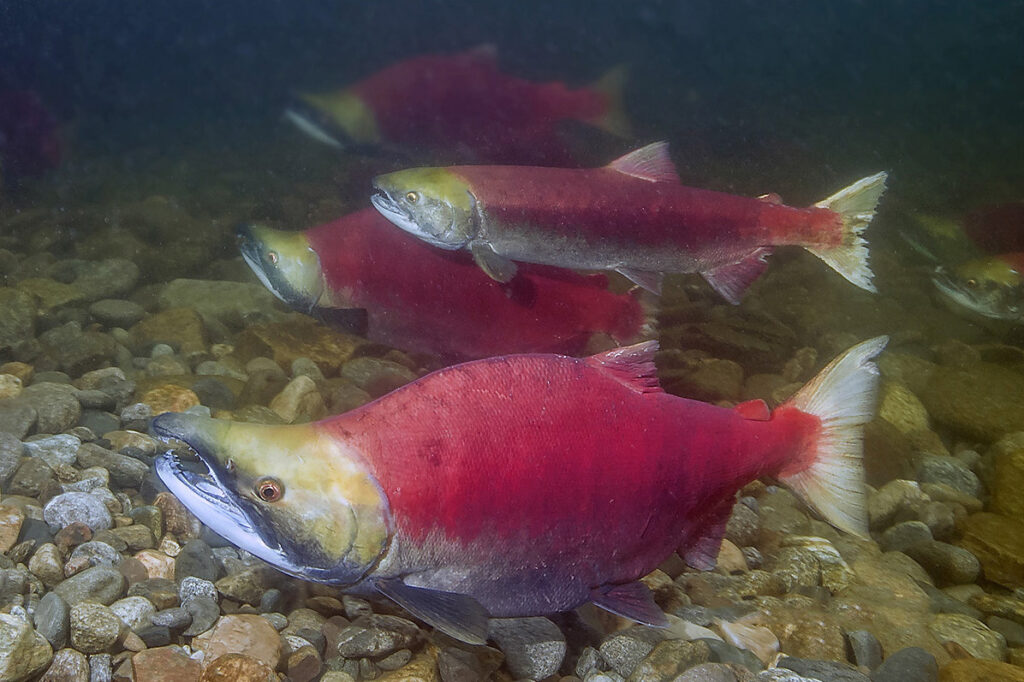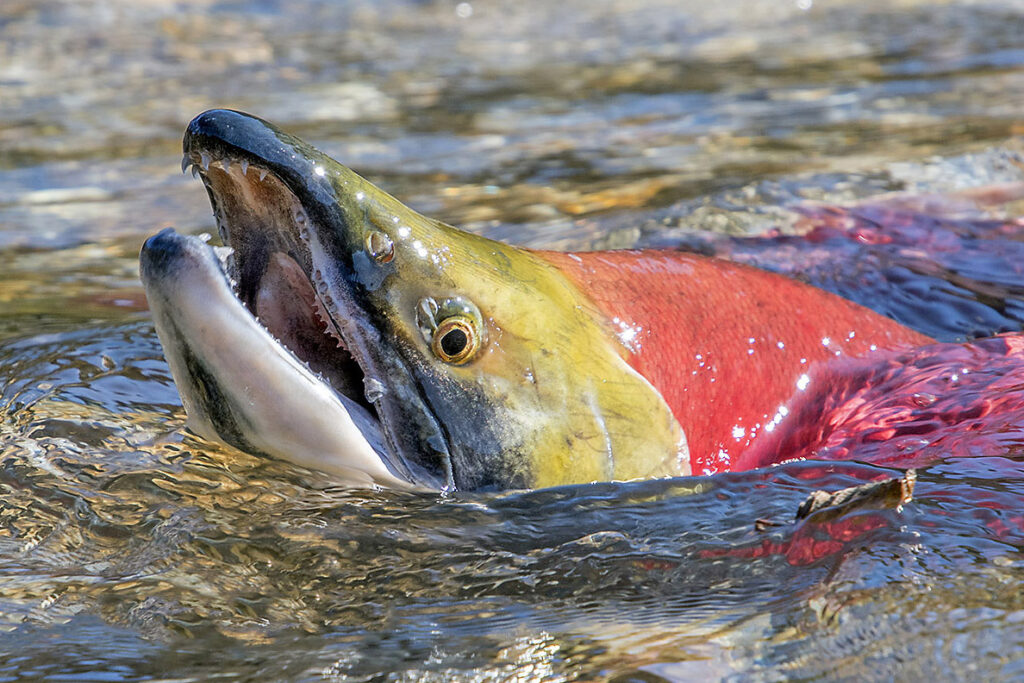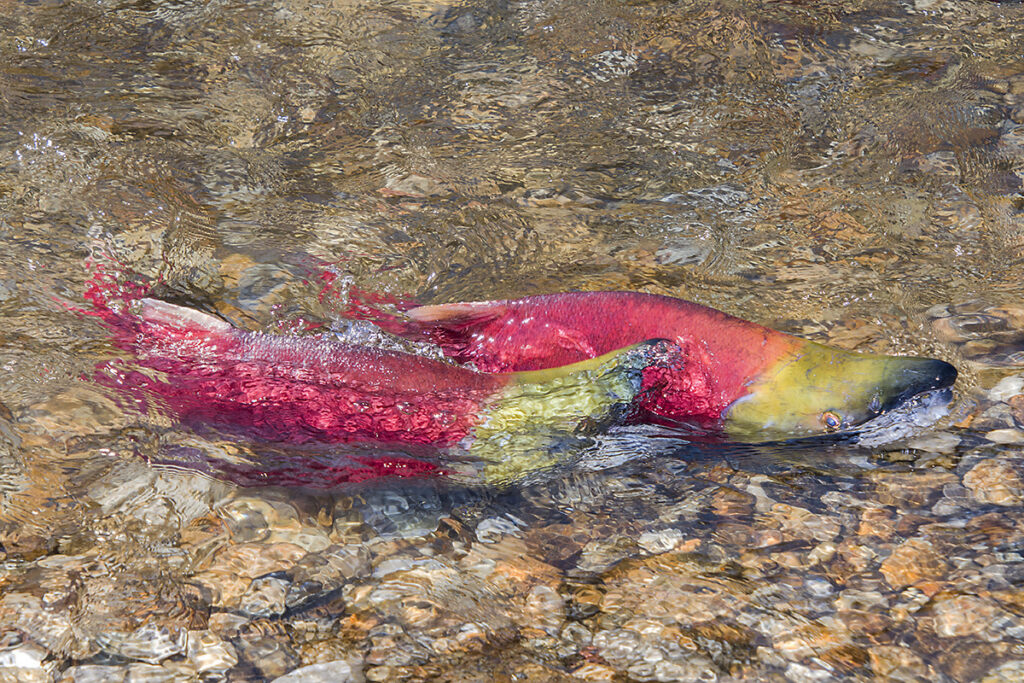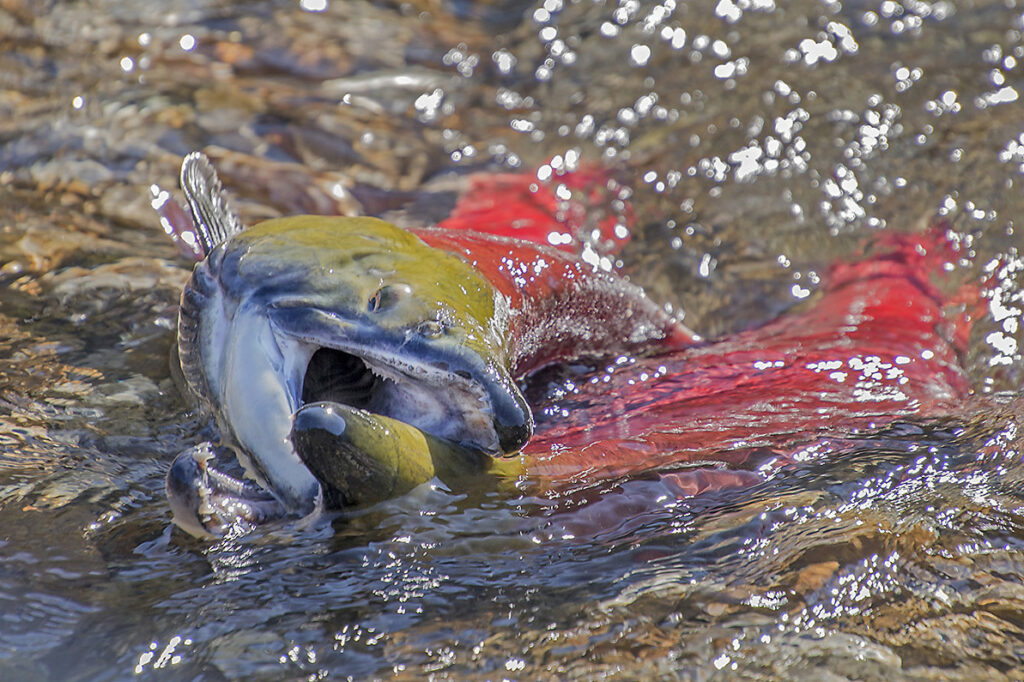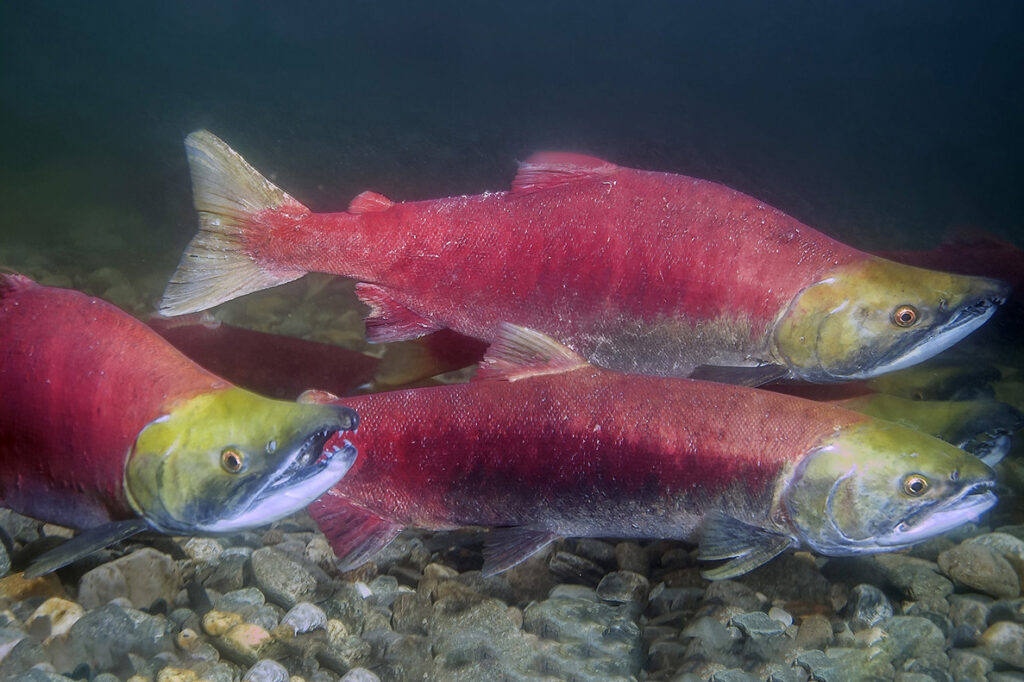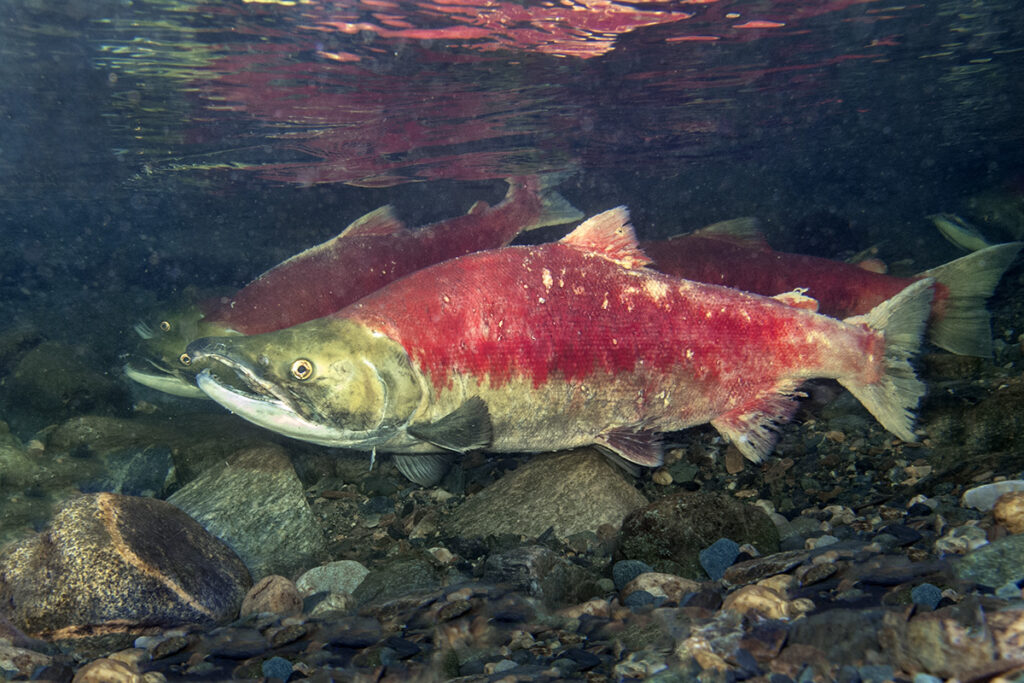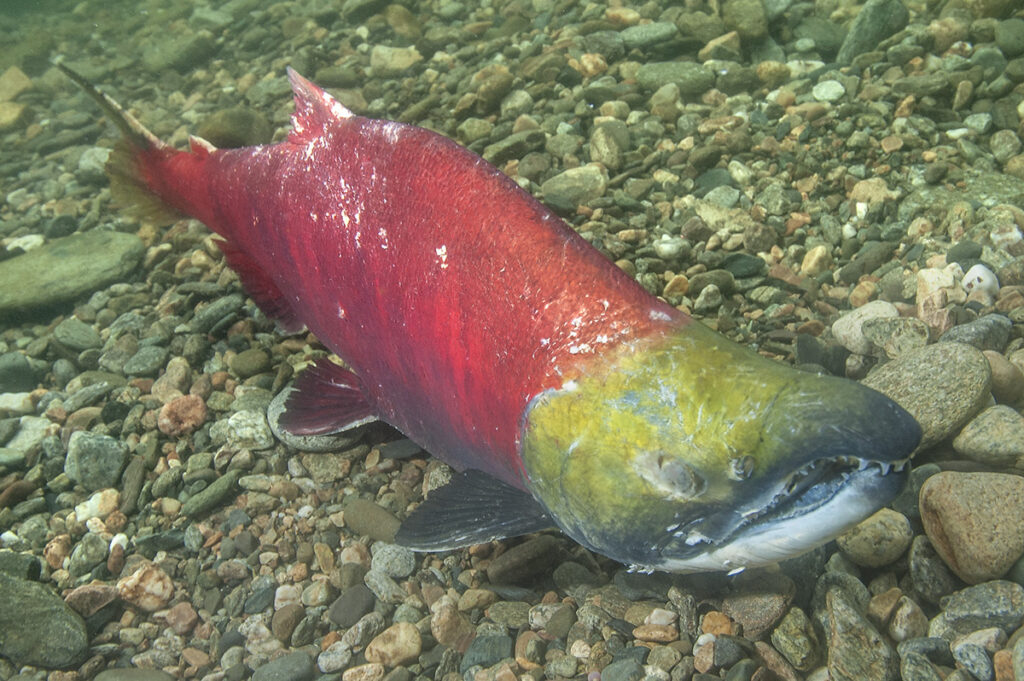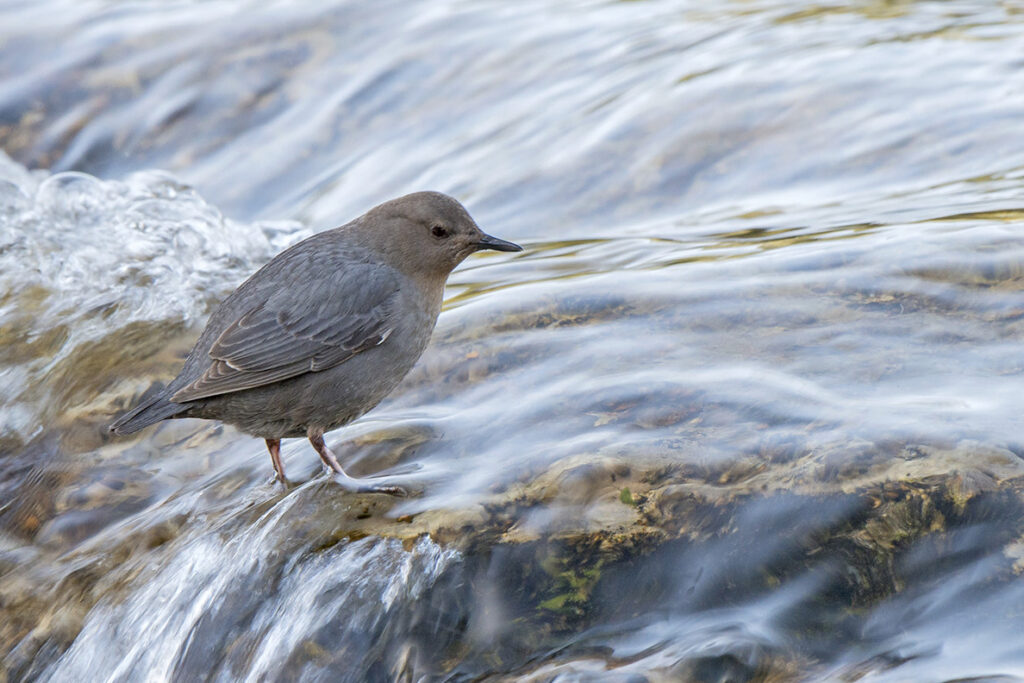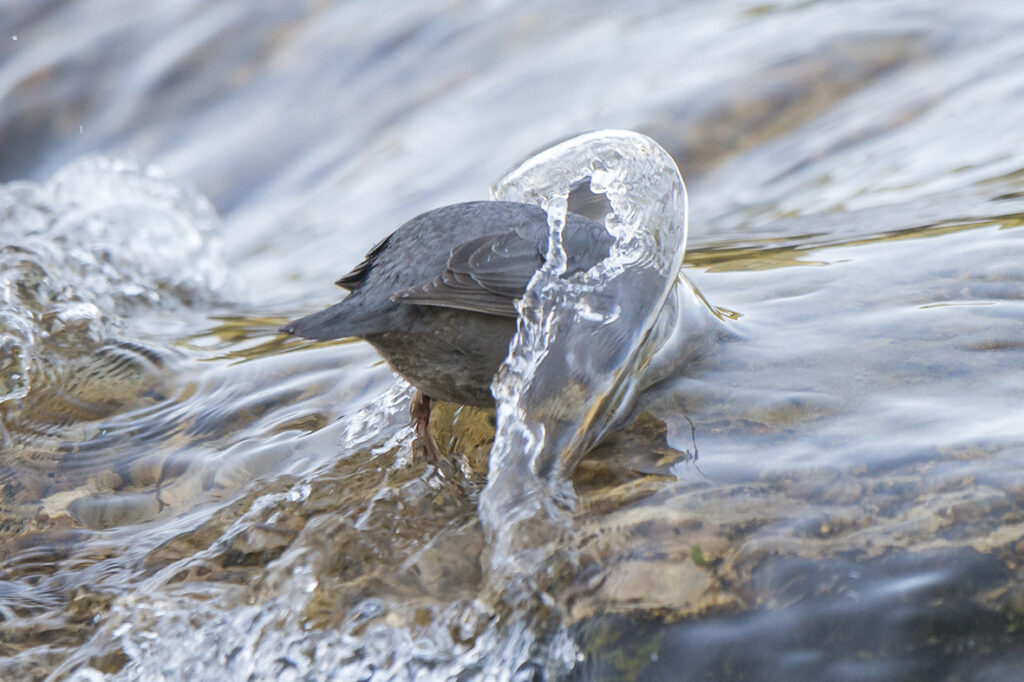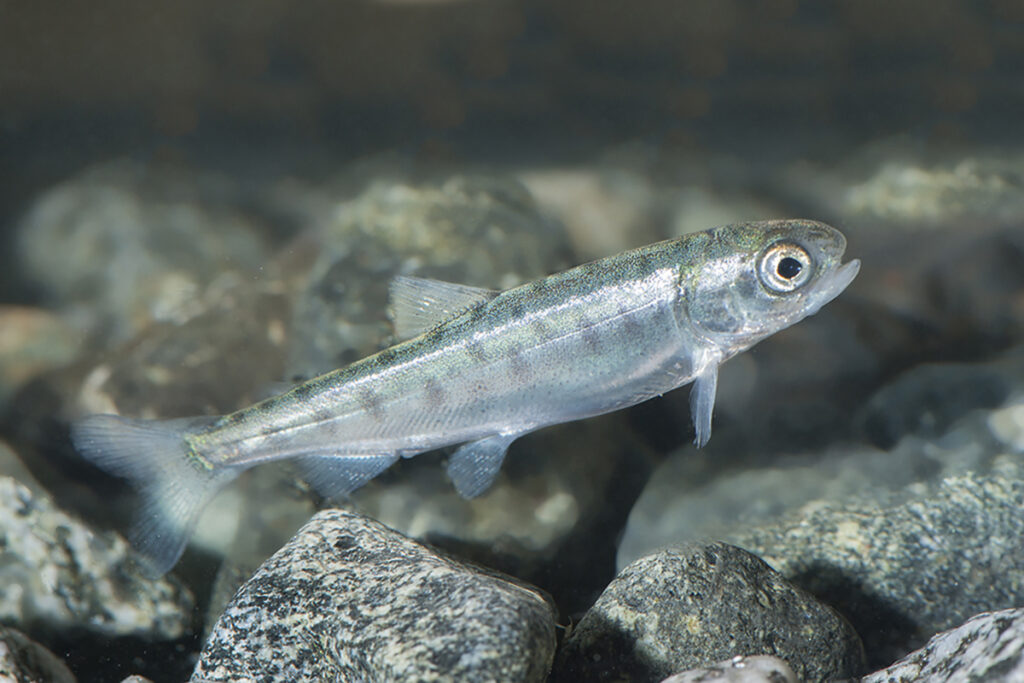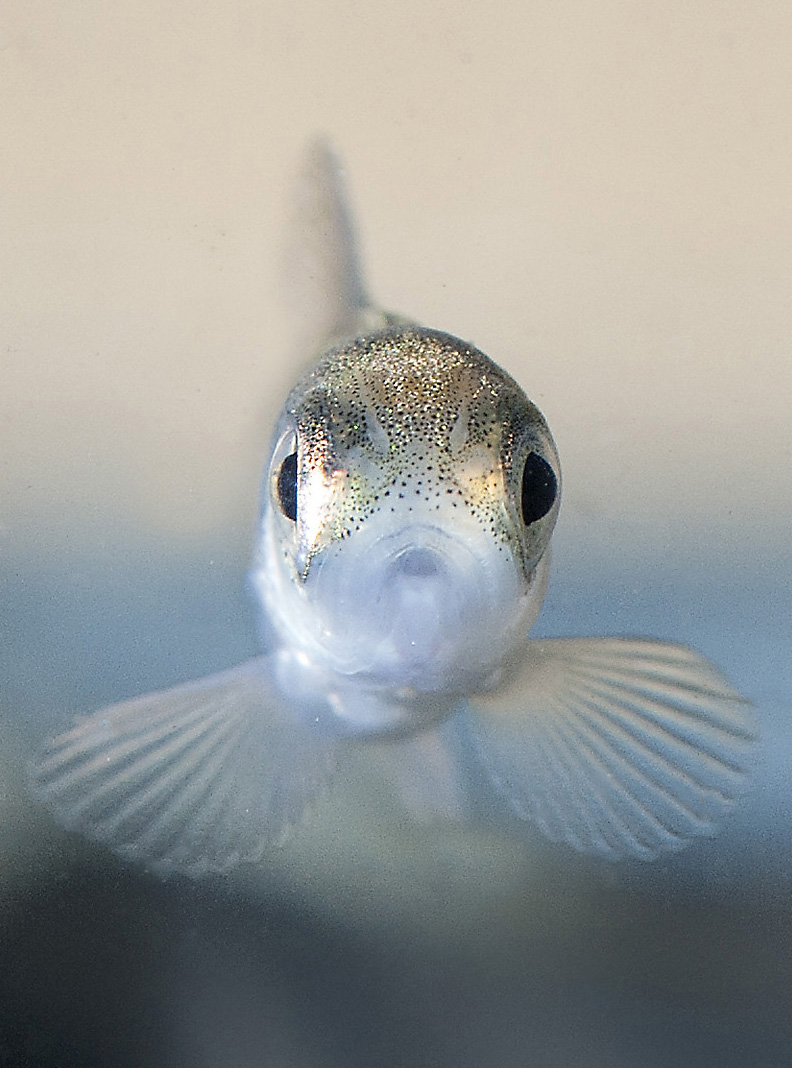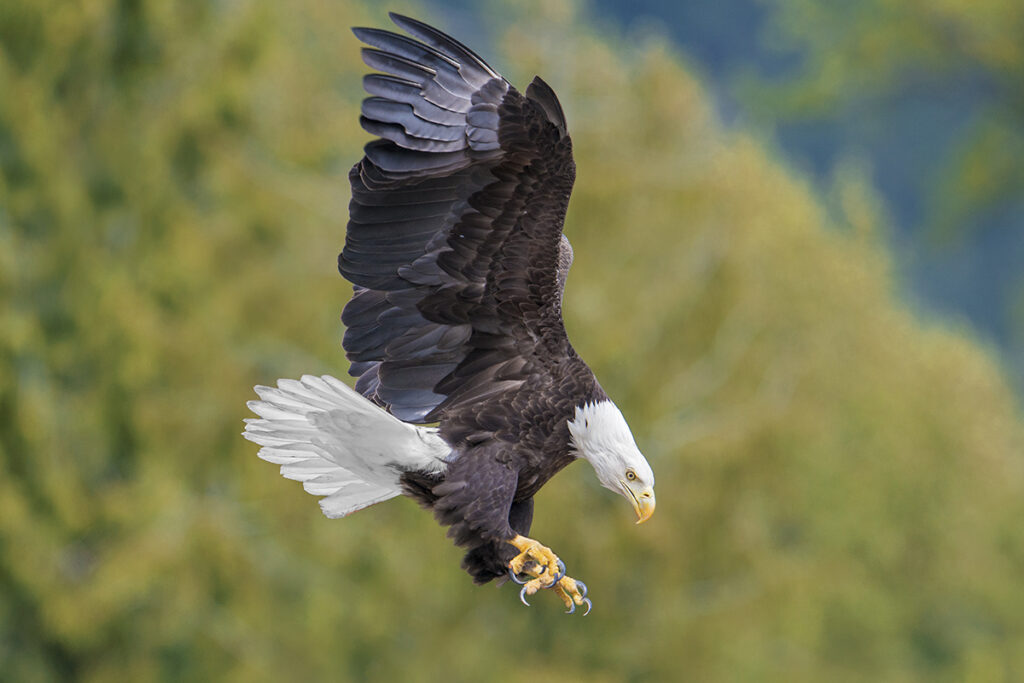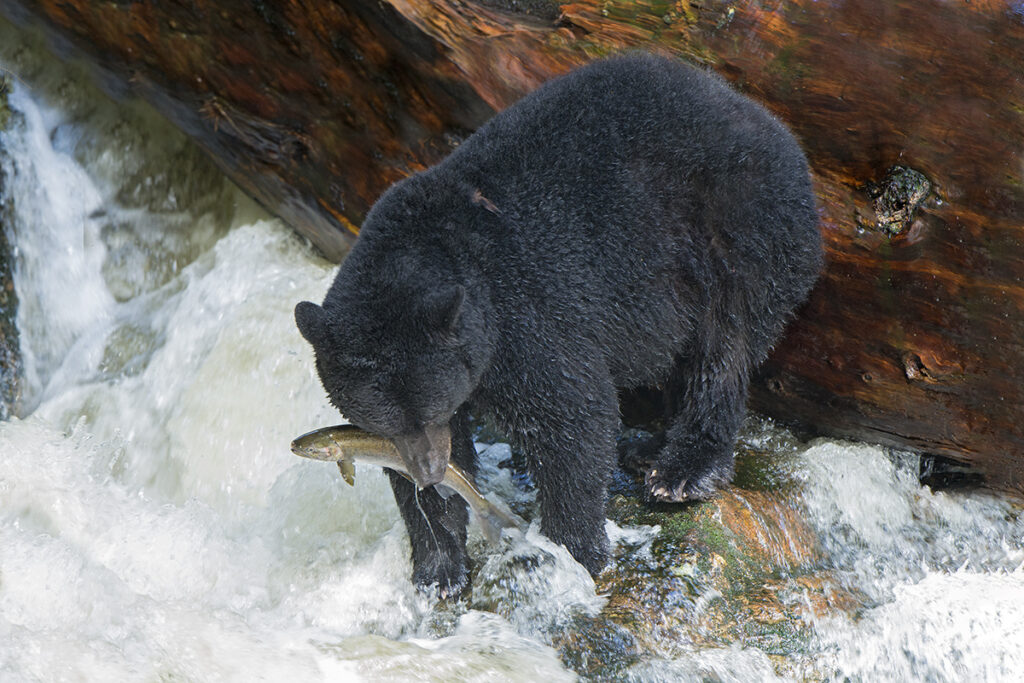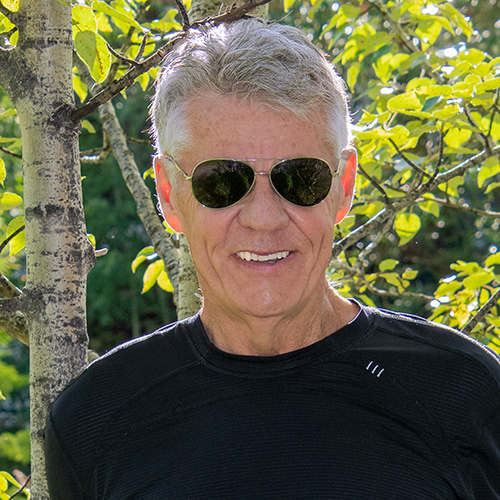Living in prairie Alberta I don’t do a lot of underwater photography but several decades ago I began travelling to the Adams River in southern British Columbia to photograph the spectacle of the sockeye salmon spawning season. Every October, some salmon return to spawn in the Adams River, but every four years the numbers peak in what is called a dominant run. October 2022 was the most recent dominant run, and the next will occur in 2026.
Five kinds of salmon breed in the North Pacific. They are, in order of increasing size, pink or humpback salmon, sockeye or red salmon (pictured here), chum or dog salmon, coho or silver salmon, and king or chinook salmon. The maximum weight of pink salmon is just 2 kilograms (4.4 lbs) whereas that of the king salmon is a whopping 61 kilograms (134 lbs). Not surprisingly, the most abundant Pacific salmon is the lightweight pink salmon and the least abundant is the heavyweight king salmon.
Once a salmon is large enough to spawn, it returns to the same river system in which it was born. The fish locate their birthplace by smell. Every river has its own unique signature odour, imparted by the combination of bedrock, soil and vegetation over which the water flows.
In general, the lives of all salmon follow the same pattern. The fish spawn in late summer or autumn in freshwater streams or lakes, sometimes 1,600 kilometres (1000 miles) from the sea.
A typical spawning stream has a bed of coarse sand and gravel, the current is fast-flowing, oxygen-rich, silt-free, and deep enough to prevent freezing or crushing by drifting ice once winter sets in.
Once the salmon enter freshwater they stop eating and every fibre of their body is focused on reproduction. They soon undergo a gaudy change in appearance. Their sleek silver and black bodies redden, their heads turn a garish green, and the males develop a grotesque hump on their backs. In the photograph, three rival males flank a solitary female.
Male sockeye undergoes an even more dramatic physical change than females. Their jaws distort and hook and their teeth enlarge. The males use their new weaponry to chase, ram, bite, and grapple with each other to win access to fertile females.
Here, a desirable female is squeezed between two competing males.
Every spawning salmon barters its survival for a one-time opportunity to procreate. None will survive the ordeal. Instead of eating, the fish draws upon its body reserves, and once its reserves are depleted, it digests its own tissues.
One year, I wrote in my journal:
The spawning stream was a chamber of horrors filled with dead and dying salmon. The crimson bodies of the fish were covered with pearly white scars. Some of the fish had loose flaps of skin that pulsated slowly in the current. Others had clouded eyes. All faced death, a death that none could escape. As I floated in the 12C (55F) water in my neoprene wetsuit, the salmon swam within centimetres of my mask. They brushed against my arms and legs. None seemed alarmed by my presence. The spectre of death had dulled their reactions.
The salmon faced into the current. Their hooked snouts opened and closed slowly, but even that seemed to be a labour. A few salmon among the hundreds were new arrivals on the spawning grounds, and these fish bullied the others, rushing and biting them. Males bit other males, and females bit females. The bullies needed a place to nest and spawn, and time was running out.
A female sockeye will lay up to 8,000 eggs. The fat-rich eggs are a nutritious food eaten by American dippers, the only western songbird that can swim underwater.
Newly hatched salmon, called fry, usually migrate downstream to lakes, where they may stay for up to three years. Once they grow to a certain size (7-10 cm), they migrate to the sea, where they do most of their growing to reach adult size.
Of the thousands of eggs laid by a single female sockeye, only two or three salmon ever survive to spawn. In their homeward journey, salmon must skirt fishing nets, scale waterfalls, avoid capture by bald eagles, and escape from hungry bears.
About the Author – Dr. Wayne Lynch
For more than 40 years, Dr. Wayne Lynch has been writing about and photographing the wildlands of the world from the stark beauty of the Arctic and Antarctic to the lush rainforests of the tropics. Today, he is one of Canada’s best-known and most widely published nature writers and wildlife photographers. His photo credits include hundreds of magazine covers, thousands of calendar shots, and tens of thousands of images published in over 80 countries. He is also the author/photographer of more than 45 books for children as well as over 20 highly acclaimed natural history books for adults including Windswept: A Passionate View of the Prairie Grasslands; Penguins of the World; Bears: Monarchs of the Northern Wilderness; A is for Arctic: Natural Wonders of a Polar World; Wild Birds Across the Prairies; Planet Arctic: Life at the Top of the World; The Great Northern Kingdom: Life in the Boreal Forest; Owls of the United States and Canada: A Complete Guide to their Biology and Behavior; Penguins: The World’s Coolest Birds; Galapagos: A Traveler’s Introduction; A Celebration of Prairie Birds; and Bears of the North: A Year Inside Their Worlds. In 2022, he released Wildlife of the Rockies for Kids, and Loons: Treasured Symbols of the North. His books have won multiple awards and have been described as “a magical combination of words and images.”
Dr. Lynch has observed and photographed wildlife in over 70 countries and is a Fellow of the internationally recognized Explorers Club, headquartered in New York City. A Fellow is someone who has actively participated in exploration or has substantially enlarged the scope of human knowledge through scientific achievements and published reports, books, and articles. In 1997, Dr. Lynch was elected as a Fellow to the Arctic Institute of North America in recognition of his contributions to the knowledge of polar and subpolar regions. And since 1996 his biography has been included in Canada’s Who’s Who.



